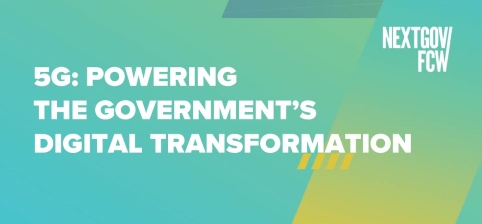5G technology promises to be a game-changer for federal agencies and how they operate and deliver services. Government agencies prepared to take full advantage of the increased bandwidth and edge computing that 5G brings will have a leg up in finding new and innovative ways to deliver on their mission.
This represents a rare opportunity for federal agencies to embrace digital transformation across their organizations. However, how to best accomplish this is still somewhat murky. The Federal Mobility Group (FMG), part of the General Services Administration, was created in 2019 to help agencies navigate this new technology.
What is the Federal Mobility Group and the 5G Testing Framework?
The Federal Chief Information Officer Council established the FMG as a federal community of practice, a group that brings public sector mobile technology experts together to address common mobility challenges. The FMG studies emerging technologies like 5G and establishes policies, guidance and best practices and serves as a single source of truth for the federal mobility community.
One of their primary deliverables has been the 5G testing framework, which guides agencies looking to test and implement 5G technologies. It establishes testing capabilities and lab and testbed assessment approaches. The framework includes:
- End-to-end 5G testing architecture and mapping to 3rd Generation Partnership Project (3GPP) 5G standards
- A modular approach listing all possible testing elements needed for different use-cases
- Two examples showing how to use the framework to understand the test elements and determine which are needed for a use-case
- Performance and security metrics that can be collected on a 5G testbed
The framework is being used to guide initiatives like the Department of Defense (DoD) implementing 5G on bases and commands. And it will continue to help civilian agencies exploring the use of advanced technologies.
 How is the Framework supposed to be used?
How is the Framework supposed to be used?
The framework includes five specific steps to create a viable testbed. This creates a modular approach that can be replicated and standardized across the federal government.
Step 1: Define use cases
Agencies should first define what the technology being researched will be used for. The working group that created the framework identified potential 5G use cases ranging from autonomous vehicles to devices that support multiple classification levels.
Step 2: Understand test elements and standards
The architecture being used should be clearly articulated. The framework identifies four primary elements of a 5G test environment:
- User equipment such as drones, autonomous vehicles, etc.
- Radio access networks like smart cells, macro towers, and similar networks
- Mobile edge cloud
- Core network infrastructure
Step 3: Determine which high-level test resources are needed
Have a full understanding of what is required to have a relevant test. This may include space to test in, network size, devices, traffic volume and more.
Step 4: Develop a test plan
The test plan should have relevance to the use case and include a clear objective, testing approach and metrics to be collected.
Step 5: Choose framework modules to conduct testing
The framework identifies four modules for testing. Not all modules are required to be in the final plan but all should be considered. The modules are:
- Architecture (5G versus LTE)
- Spectrum (which to use)
- Application traffic generation (live or emulated)
- Network (type of network used)
What should the end result be?
In April 2021, FMG, along with collaborators, hosted a two-day workshop to show what the framework looks like in practice. In this case, the webinar focused on two specific use cases: unmanned aircraft and smart warehouses. The Federal Aviation Administration discussed the use case for unmanned drones that leverage 5G cellular technology. The DoD tested 5G-enabled smart warehouses that feature automated inventory processes. Both are still in the experimental stage, but the testing framework will help ensure proper methods are used and the process arrives at sound conclusions.
Interested in learning more about what the 5G testing framework means to your agency? Contact a Carahsoft 5G representative or visit Carahsoft to learn more.






